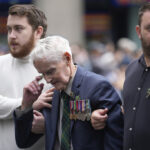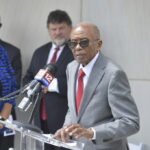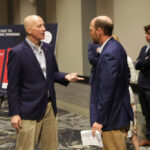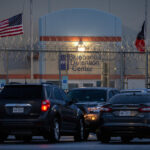Federal Reserve officials at their most recent meeting indicated that there are signs inflation is coming down, but not enough to counter the need for more interest rate increases, meeting minutes released Wednesday showed. While the Jan. 31-Feb. 1 meeting concluded with a smaller rate hike than most of those implemented since early 2022, officials stressed that their concern over inflation is high. The Associated Press has the story:
Fed’s: All officials backed quarter-point hike
Newslooks- WASHINGTON (AP)
Nearly all Federal Reserve policymakers agreed earlier this month to slow the pace of their rate increases to a quarter-point, with only “a few” supporting a larger half-point hike.
The minutes from the Fed’s Jan. 31-Feb.1 meeting said most of the officials supported the quarter-point hike because a slower pace “would better allow them to assess the economy’s progress” toward reducing inflation to their 2% target. The increase raised the Fed’s benchmark rate to a range of 4.5% to 4.75%, the highest in 15 years.
The central bank’s rate hikes typically lead to increases in the costs of mortgages, auto loans, credit card borrowing and business lending.
At the meeting, Fed officials also unanimously agreed that “ongoing increases” in the Fed’s key rate “would be appropriate,” which points to additional hikes in the next two meetings, at least.
Overall, the minutes showed that the Fed’s policymakers emphasized their determination to keep rates high to curb high inflation even as they welcomed a slowdown since the fall.
Since the meeting, the outlook for inflation has become more worrisome. At a news conference Feb. 1, after the meeting, Chair Jerome Powell stressed that inflation, while still too high, was gradually cooling. He also suggested that it was still possible the Fed could quell inflation without raising rates so high as to cause widespread layoffs and a deep recession.
“The disinflationary process has started,” Powell said then, referring to the steady slowdown in year-over-year inflation from a peak of 9.1% in June to 6.5% in December.
But since then, a succession of economic reports has pointed to a still-robust economy despite the Fed’s eight rate hikes over the past year. Hiring has accelerated, retail sales have rebounded and revised figures show that inflation pressures remain high and might require more Fed rate hikes than many had assumed.
Last week, a government report showed that consumer price inflation rose faster than expected from December to January, and the year-over-year figure barely slowed last month, to 6.4%. With revisions to previous months factored in, inflation rose 4.6% he previous three months, up from 4.3% in December.
In the past three months, so-called core prices, which exclude volatile food and energy costs, have risen at a 4.6% annual rate. That is below the year-over-year number and suggests that more declines are coming. But that figure is up from 4.3% in December.
With the economy now looking stronger and inflation more persistent, economists expect the Fed to raise its key rate higher this year than previously projected. Many now expect the central rate to boost its benchmark short-term rate to a range of 5.25% to 5.5%.
That would be three-quarters of a point higher than its current level and a quarter-point higher than the Fed had projected in December. The prospect of higher borrowing rates for companies and individuals has roiled financial markets, with stock prices falling and bond yields rising sharply this month.







